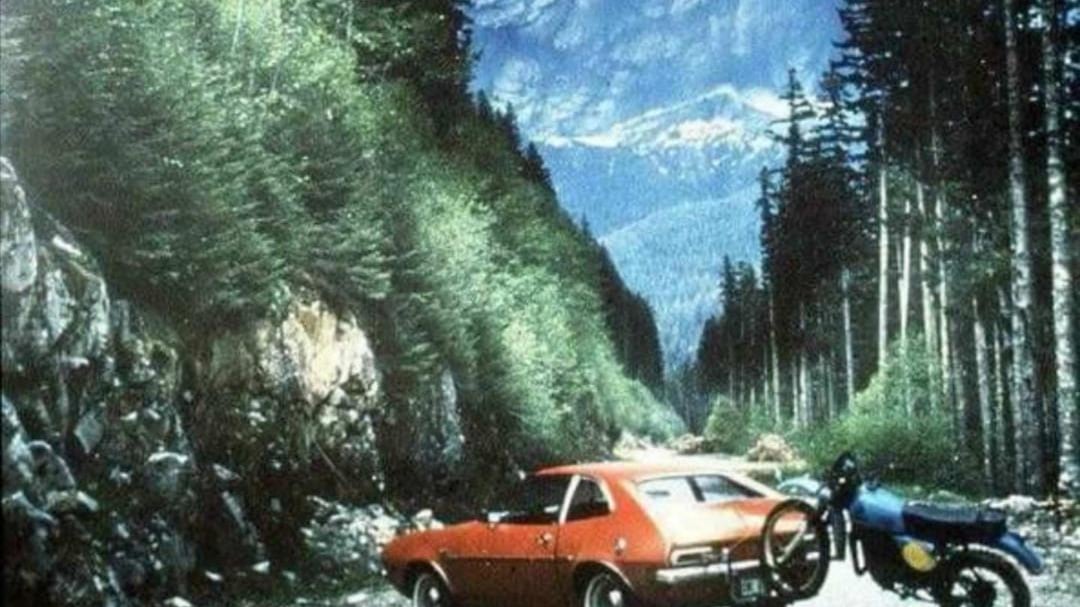It looks like a photo taken by a dead man.
In the foreground, a red Ford Pinto with a vintage motorcycle hitched to its bumper is parked on a dirt road lined with trees. Behind it, an ominous tower of ash rises miles into the sky, seemingly just over the hill from where the camera is positioned.
It is among the more astonishing photos depicting the eruption of Mount St. Helens—few images capture the beauty and horror of the moment so directly, and in such painterly tones.
The picture is well known. A copy hangs in the Johnston Ridge Observatory, in the Mount St. Helens National Volcanic Monument, and it has been featured in exhibits commemorating the disaster.
But for almost 40 years, the context of the photo appeared lost to time. Where exactly was it taken? Who took it? And how did they make it out alive? Or did they?
Dan Strohl isn't sure where he first saw the photo, but as the online editor at Vermont-based Hemmings Motor News, he's come across it a lot. The image is particularly popular in automotive circles—1970s Pintos famously had rear fuel tanks prone to explode in rear-end collisions, so for car enthusiasts, the sight of one parked in front of an erupting volcano made for an apt visual metaphor.
And the more Strohl saw it on message boards and social media feeds, the more intrigued he became.
"It got to the point where I said, 'I've got to find out what's going on,'" says Strohl, who worked in Roseburg, Ore., early in his journalism career.
Last year, Strohl began scouring the internet for every instance of the photo, in hopes of finding a stray comment that might hint at who took it.
He eventually found one.
A guy on Facebook named Gary Cooper claimed an old co-worker took the photo. According to Cooper, the photographer was Richard Lasher, who worked with him at the Boeing plant in Frederickson, Wash.
Cooper told Strohl that Lasher left his house that morning in his Pinto with plans to ride his motorcycle around Spirit Lake, an area that received the brunt of the impact from the eruption. He overslept and made it only part of the way by the time the volcano blew.
"Had Lasher made it to Spirit Lake," Strohl later wrote, "he'd almost certainly have died."
Strohl estimates the photo was taken along the forest roads of Gifford Pinchot National Forest, possibly near the town of Randle. In Cooper's account, Lasher stopped so abruptly he bent the forks of his Yamaha IT Enduro bike. The ash cloud overtook him, but he eventually made it out, and even went back the next day, capturing photos of the devastation, and ended up getting airlifted out and spending the night in jail.
Two other former co-workers corroborated Cooper's story. None, however, knew of Lasher's current whereabouts. He had a Facebook page as late as 2018, but it has since been deleted. Most assumed he'd died.
WW was unsuccessful in our own attempt to track Lasher down. None of the Richard Lashers with Washington telephone phone numbers returned our calls. An inquiry with the U.S. Forest Service sparked a game of phone tag that ended in a dead end.
Strohl has not received any further updates in the 11 months since publishing his article, and doesn't expect he will. But there is another element of the mystery he'd like to solve: What happened to Lasher's car?
"If you have a red Pinto hatchback with a lot of volcanic ash in the seams," he wrote in his article, "get in touch with us."

